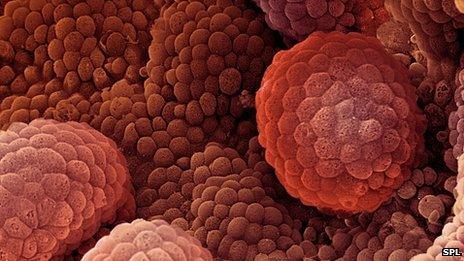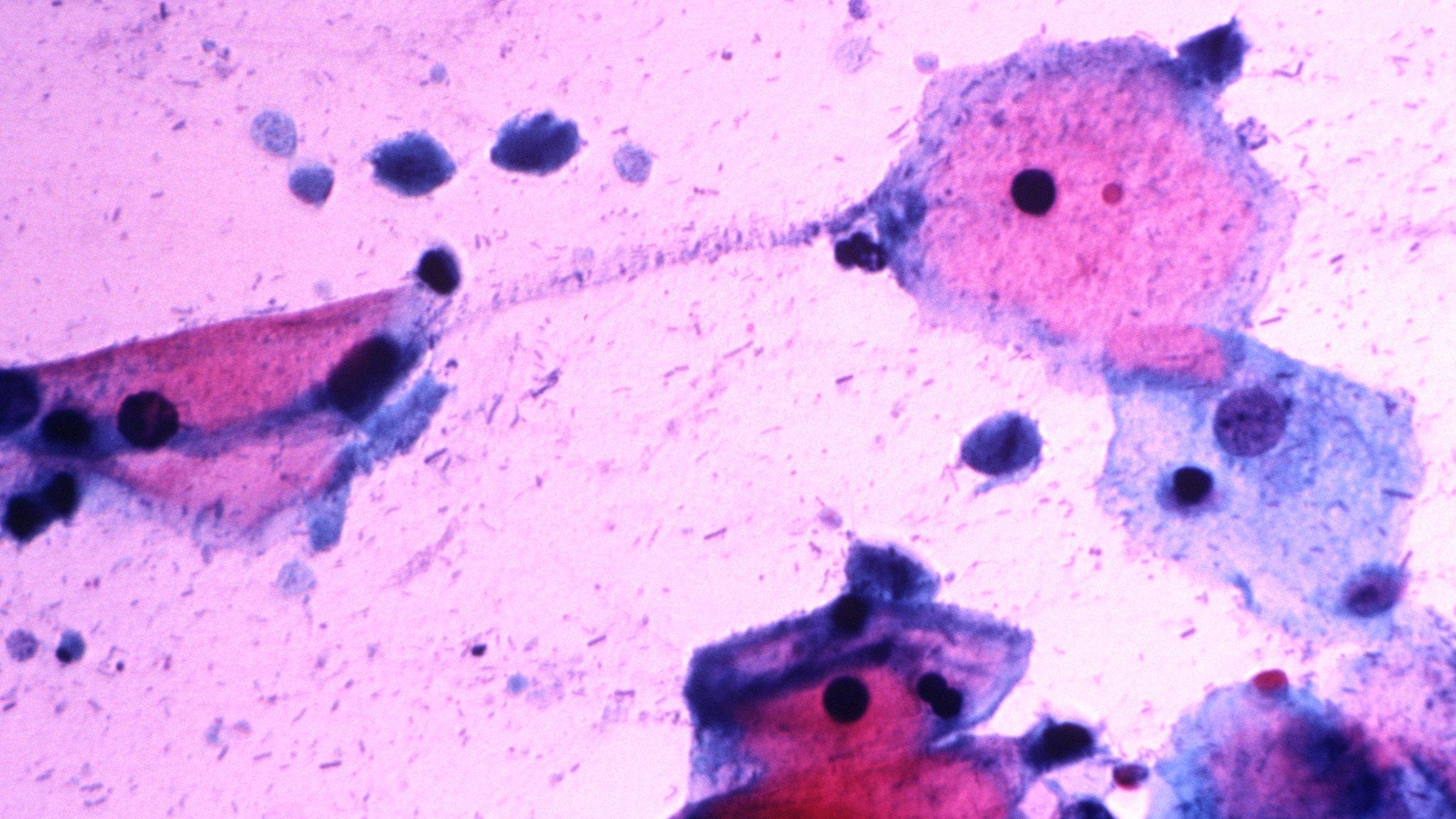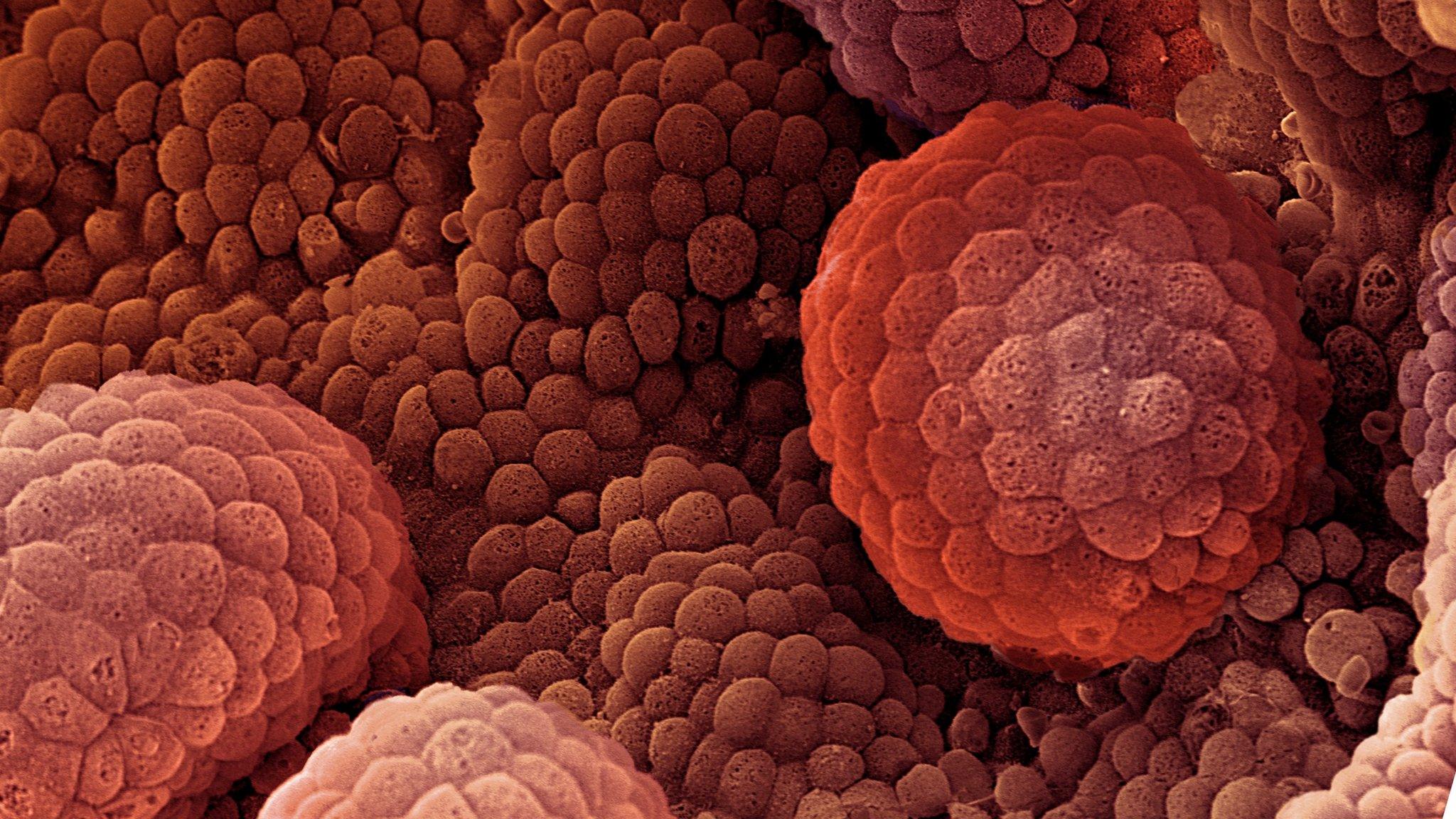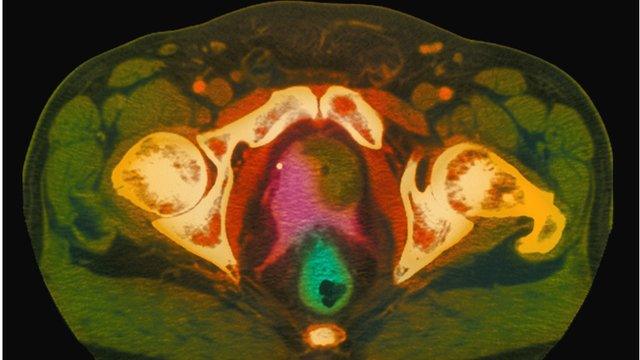Dress based on how prostate cancer spreads through the body is unveiled
- Published

Dr Baena said the design was based on the tumour transformation process
A dress adorned with a pattern created using a scientist's studies into how prostate cancer spreads in the body has been unveiled.
The creation, based on Dr Esther Baena's work at the Cancer Research UK Manchester Institute, was put together by American designer Arielle Gogh.
It was made as part of a project to show research to a new audience.
Dr Baena said creating it had been about transforming her work into "something tangible".
She worked with Ms Gogh, who is based in Pennsylvania, via video message and email to design the dress.
University of Manchester scientist Dr Baena said the garment, which has been on show in the US city of Boston, depicted the tumour transformation process.
"We made the cell shapes look increasingly rough to show tumour progression and used stronger staining to differentiate between normal and cancerous cells," she said.
"The biggest incentive for me to take part in this project was so I could help transform my research into something tangible and visually appealing.
"I hope it has got people who wouldn't normally think about science or cancer research talking about this important subject."
The dress will now be taken on a world tour to promote public understanding of science.

Prostate cancer

More than 41,700 men are diagnosed with prostate cancer each year, almost a quarter of all cancers diagnosed in men
In the UK, about 1 in 8 men will get prostate cancer at some point in their lives
Between 2009 and 2011, a third of all cases were diagnosed in men over 75
In the UK, black African and black Caribbean men are two or three times more likely to develop it than white men. Asian men have a lower risk than white men
Source: Cancer Research UK, external
- Published27 August 2014

- Published20 May 2014

- Published11 April 2014

- Published1 November 2013
